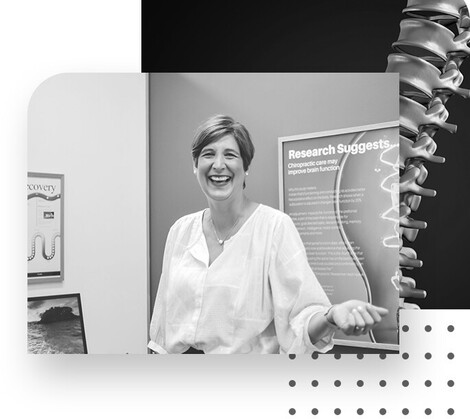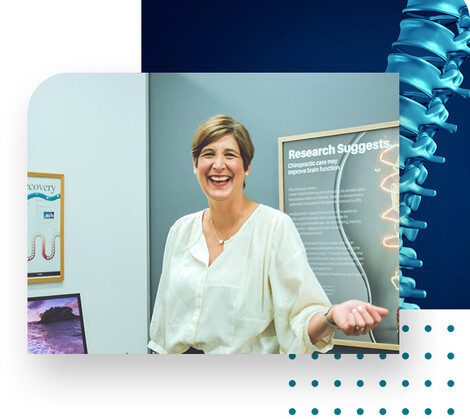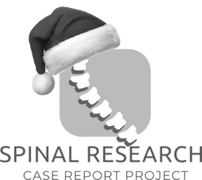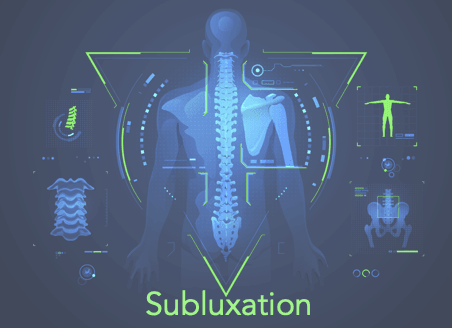
We provide this link to the Australian Chiropractor's Association 'President's Message'. Dr Cahill expresses sentiments of high value for the services provided by chiropractors. Dr Cahill has contributed the lead article in this issue's special section on 'subluxation' in which he examines the role of our professional lexicon.
Cahill: Chiropractic Lexicon: Useful or not?
McIvor: Chiropractic Care for Subluxation: A descriptive review of the literature 2019 - 2022
Rome & Waterhouse: The Chiropractic Subluxation: Medical evidence in support of the subluxation construct
Seaman: The value of case reports for informing subluxation research funding
Venning: Communication: Subluxation without obfuscation
Vincent: A visualisation with notes of subluxation's role in practice
McIvor, Postlethwaite, Kolterman, & Martin: Depression, ligament Instability and chronic pain improvement concomitant with a course of concentrated Chiropractic Care: A case report

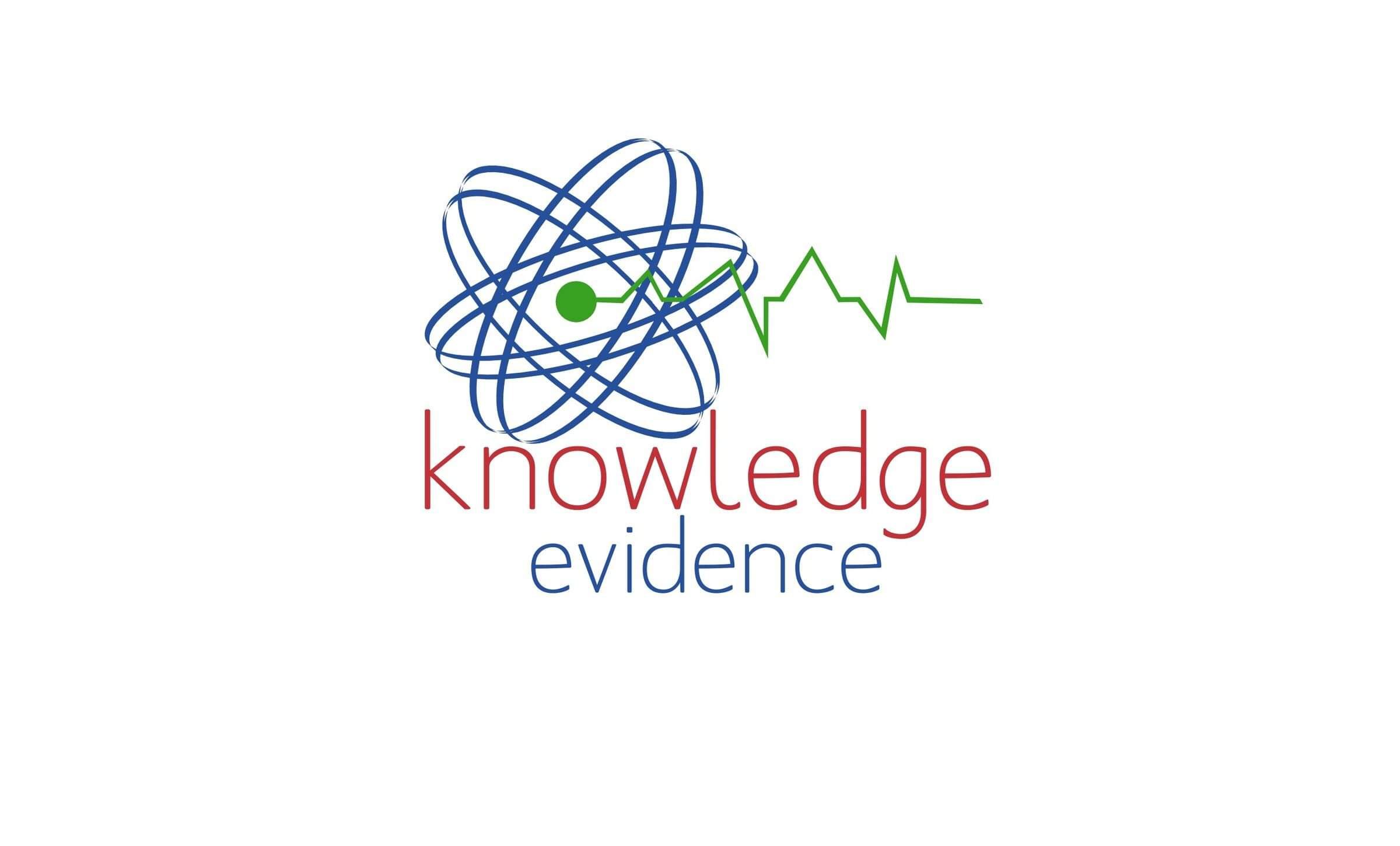
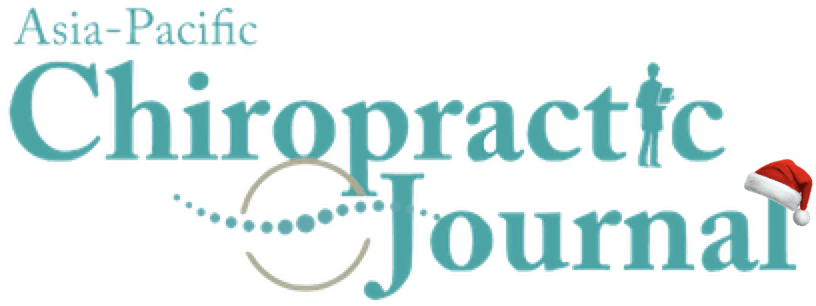
Papers
Editorial: Bushfires, blizzards, flooding, tornadoes, COVID, and scammers: Is an amnesty the answer?
Dion: Finding your own way [WCCS]
Masarsky & Todres-Masarsky: Long COVID: A Risk Factor for Scoliosis Incidence and Exacerbation? [Hypothesis].
Davis & Blum: A history of temporal sphenoidal (TS) diagnosis and its clinical application
Leung & Chu: Cervical Spondylosis and visual dysfunction: A brief overview
Palomar & Svet: Neuroreceptor therapy; the method of Proprioceptive-Deep Tendon Reflex (P-DTR) in functional neurology: from theory to practice
Kirdoglo: Etiopathogenetic significance of hidden compression syndromes in chronic low back pain syndrome development. / Глеб КИРДОГЛО: ЭТИОПАТОГЕНЕТИЧЕСКОЕ ЗНАЧЕНИЕ СКРЫТЫХ КОМПРЕССИОННЫХ СИНДРОМОВ В ФОРМИРОВАНИИ ХРОНИЧЕСКОГО БОЛЕВОГО СИНДРОМА НИЖНЕЙ ЧАСТИ СПИНЫ [Russian] / Kirdoglo: Етіопатогенетичне значення прихованих компресійних синдромів у розвитку синдрому хронічного болю в попереку. [Ukrainian]
Garten: Heterophoria, Panic Disorder, Exposure-Based Treatment: A case report [German]
Willenborg: Helmet therapy for skull deformities
Blum: Channeling healing energy: The power of words in the chiropractic clinical encounter, Part two
Fox et al: Vitalism in a New Zealand chiropractic program
Chiropractic Lexicon: Useful or not?
Abstract: Obtaining an ultimate definition of this ‘something’ we have been addressing, successfully, for over 125 years is elusive, yet this allows flexibility when defining it within different contexts. This provides space for chiropractors to do this (both consciously and subconsciously) every day in practice, and over time to use their growing experience to add complexity and subtlety to their conceptual framework, and their application of their science and art. Millions of patients over the years would attest to the value in that.
Indexing Terms: chiropractic; subluxation; definition; lexicon; rhetoric
Cite: Cahill D. Chiropractic Lexicon: Useful or not? Asia-Pac Chiropr J. 2023;3-3. URL apcj.net/Papers-Issue-3-3/#CahillLexicon
Chiropractic Care for Subluxation: A descriptive review of the literature 2019 – 2022
Abstract: A descriptive review of chiropractic literature published between 2019-2022 (inclusive) and pertaining to subluxation has been undertaken. The found papers allowed a full and in-depth literature review. This is a descriptive review extracting themes and reporting them to reveal the type of evidence and the trends within these papers. As such this paper provides a snapshot of recent advancements in the way the clinical concept of subluxation is able to allow reports of practice within the chiropractic literature. I also identify trends that emerged from my analysis.
Indexing Terms: chiropractic; subluxation; descriptive review; clinical evidence; chiropractic trends
Cite: McIvor C. Chiropractic Care for Subluxation: A descriptive review of the literature 2019 - 2022. Asia-Pac Chiropr J. 2023;3.3. URL apcj.net/Papers-Issue-3-3/#McIvorDescriptiveReview
Preserving the chiropractic subluxation: A narrative literature review of research for and against the controversial diagnostic term
Abstract: Background For decades the chiropractic profession has faced internal and external conflicts surrounding the scope, beliefs, techniques, and ideologies of practitioners. Most literature discussing these facets of the profession have defined two specific groups that are either practicing ‘orthodox’ or ‘unorthodox’. Previous gaps in research and conflicting evidence have suggested an inquiry into whether using the term ‘subluxation’ still valid for the future of chiropractic diagnosis, treatment, and management. And what impact does the term have on solidifying the profession’s unique identity within the medical model and demand for patient-centred care.
Design A narrative literature review.
Methods A review of available literature was conducted and produced 317 results across multiple databases. 146 articles where then identified and a collection of 515 articles then met the inclusion and exclusion criteria for answering the clinical question. A Narrative Review Checklist and Summary of Significance were assessed on the strengths and limitations of these articles in forming an objective discussion on the validity of chiropractic vertebral subluxations.
Results Narrative reviews have been the main form of research on the topic of vertebral subluxation. Whilst this has allowed for very interesting insights and strengths of literature progression, it has limited the tangible progression of the chiropractic subluxation premise.
Conclusion Whilst there is discouraging research available that aims to invalidate the chiropractic subluxation, there is also robust evidence in favour of this term. It seems reasonable to say that assessment and treatment of subluxations hold a significance in this identity of chiropractic and should not be dismissed as archaic but celebrated as unique and cause for further research.
Indexing Terms: Chiropractic; subluxation; vertebral subluxation; evidence-based practice; chiropractic philosophy; chiropractic curriculum
Cite: Eldemire J. Preserving the chiropractic subluxation: A narrative literature review of research for and against the controversial diagnostic term. Asia-Pac Chiropr J. 2023;3.3. URL apcj.net/Papers-Issue-3-3/#EldemireSubluxation
The Chiropractic Subluxation: Medical evidence in support of the subluxation construct
Abstract: This presentation serves to demonstrate the widespread use and acceptance of the term subluxation. It acknowledges the broader chiropractic interpretation by recognition and adoption of the term outside the profession. In particular, it also emphasises the medical recognition supported by some of the medical evidence incorporating the construct of a chiropractic vertebral subluxation complex, and its utilisation in practice.
The vertebral subluxation concept is similar to the terms spinal dysfunction, somatic dysfunction, segmental dysfunction or the vague vertebral lesion. These terms are primarily used by osteopaths, physiotherapists and medical doctors to focus their manipulative techniques, but they relate primarily to the physical-mechanical aspects. In this respect, these terms are limited in what they signify. The implication of just plain osseous biomechanical dysfunction does not incorporate the wider ramifications of integrated neural, vascular, and internal associations which may involve greater ramifications, and should be more appropriately referred to as a vertebral subluxation complex (VSC).
Indexing Terms: Medical Terminology; Vertebral Subluxation; Vertebral Subluxation Complex
Cite: Rome PL, Waterhouse JD. The Chiropractic Subluxation: Medical evidence in support of the subluxation construct. Asia-Pac Chiropr J. 2023;3.3. URL apcj.net/Papers-Issue-3-3/#RomeWaterhouseMedicalEvidence
The value of case reports for informing subluxation research funding
Abstract: The Australian Spinal Research Foundation (ASRF) is conducing a project to gather case reports about chiropractic practice where presentations other than pain and musculoskeletal dysfunction are addressed. The express purpose is to enrich the literature with practice-based reports of conditions which may represent the impact of subluxation on the expression of health and well-being.
These published reports inform the Board of the ASRF with its decision-making around selecting which research activity to fund from responses to its annual call for Expressions of Interest. This short paper identifies four particular projects currently funded and being undertaken around the world.
The ASRF is grateful for the practice-based clinicians contributing to the Case Report Project and will shortly report on progress of the major funded research activities.
Indexing Terms: chiropractic; research; subluxation; funding; ASRF
Cite: Seaman R. The value of case reports for informing subluxation research funding. Asia-Pac Chiropr J. 2023;3.3. URL apcj.net/Papers-Issue-3-3/#SeamanASRF
Communication: Subluxation without obfuscation
Abstract: Since Chiropractors gained regulation in many jurisdictions we have been included in the pathogenic disease management approach. Many of the people who consult with us expect such an approach including diagnosis and therapeutic intervention and Chiropractors may have legal duties to fulfil such obligations.
The diagnosis-therapy interaction between professional and patient is usually a hierarchical one where the patient is dependent on the professional. The salutogenic model is a participatory one in which the person under care is enabled to find and implement solutions.
This paper explores communication of subluxation through a salutogenic lens to allow more empowerment and improve the outcomes of the people we serve.
Communicating subluxation well is a service to humanity and one worthy of the attention, time, skill and energy of the Chiropractic profession.
Indexing Terms: chiropractic; subluxation; salutogenesis; communication
Cite: Venning G. Communication: Subluxation without obfuscation. Asia-Pac Chiropr J. 2023;3.3. URL apcj.net/Papers-Issue-3-3/#VenningCommunication
A visualisation with notes of subluxation's role in practice
Abstract: Many chiropractors are visual creatives and include drawing and lists as communication aids with patients. In recognition of the role of visual learning this paper presents a visual chart showing the relationship and key elements of the interaction between the patient and the chiropractor.
An emphasis is placed on Quality of Life including ‘reduced well-being’ and ‘loss of joyful activities’.
Indexing Terms: chiropractic; subluxation; patient-focussed care; communication; patient management; protocols
Cite: Vincent A. A visualisation with notes of subluxation's role in practice. Asia-Pac Chiropr J. 2023;3.3. URL apcj.net/Papers-Issue-3-3/#VincentVisualisation
Changing chiropractic’s subluxation rhetoric: Moving on from ‘deniers’, ‘vitalists’, and ‘unorthodox’, to realists, post-realists, and absurdists
Abstract: Chiropractic rhetoric must advance beyond vitalists attacking subluxation deniers, and deniers holding firm to eminence over evidence. I am calling for clear and strong debate in which the issues and their evidence are examined in the manner of traditional philosophical debate.
The purpose of this paper is to present two behaviours that will each change the profession and discipline’s narrative about subluxation, scilicet: (i) that an active, intellectual discussion occur and (ii) that it be published in any author’s preferred journal of record, indexed by the Chiropractic Library Collaboration with terms that will connect the papers, and be open access for all.
To facilitate this change I present a palette of three terms with exposition to show how we can build our rhetoric into constructive argument from either a realist, a post-realist, or an absurdist view-point.
For the reason the post-realist and absurdist’s positions are opinion, have not been thought-through, and show no appreciation of the paradox that they have no evidence at all supportive of that opinion, they should cease gaslighting the realists and anyone who opposes their position.
Chiropractic realism is the conventional position of the majority of the profession and of the discipline. The realists quite rightly demand to see and discuss the evidence held by the post-realists.
Indexing Terms: Chiropractic; subluxation; realism; post-realism; absurdism; orthodox; rhetoric
Cite: Ebrall P. Changing chiropractic’s subluxation rhetoric: Moving on from deniers and vitalists to realists, post-realists, and absurdists. Asia-Pac Chiropr J. 2022;3.3. URL apcj.net/Papers-Issue-3-3/#EbrallRhetoric
Depression, ligament instability and chronic pain improvement concomitant with a course of concentrated Chiropractic Care: A case report
Abstract: Introduction: A 65-year-old female presented for care with a primary concern of worsening depression and chronic pain. Further investigation revealed cervical ligament instability, hypertension, abnormally high surface spinal EMG readings and a multiple subluxations.. She commenced a course of concentrated chiropractic care whereby she received 41 spinal adjustments and a number of other supports via the Averio Functional Neurological Technique.
Outcomes: Following one week of concentrated care, the patient self-reported significant decreases in negative thinking and depressive symptoms. Post-care tests revealed normalisation of Fakuda’s and King Devick’s tests and reductions in subluxations coinciding with a reduction in patient-reported pain levels.
Conclusion: Chiropractic care may be of value in the management of depression and chronic pain. Further research is required to determine the mechanisms.
Indexing Terms: Chiropractic; Subluxation; low-force; concentrated care; depression; ligament instability
Cite: McIvor C, Postlethwaite R, Kolterman S, Martin A. Depression, ligament Instability and chronic pain improvement concomitant with a course of concentrated Chiropractic Care: A Case Report. Asia-Pac Chiropr J. 2023;3.3 URL apcj.net/Papers-Issue-3-3/#AverioDepressionChronicPain
Infertility and Gonstead Chiropractic: A case report
Abstract: Infertility is not sterility and is defined where a couple has not conceived after 12 months of unprotected intercourse. For a family trying to conceive, a delay in achieving pregnancy is distressing and can damage relationships. This case study describes chiropractic management of a patient experiencing infertility.
Indexing Terms: infertility; back pain; headaches; pregnant; Gonstead; Chiropractic
Cite: McNamara C. Infertility and Gonstead Chiropractic: A case report. Asia-Pac Chiropr J. 2022;3.3 URL www.apcj.net/papers-issue-3-3/#McNamaraInfertility
Applied Kinesiology management of Dysmenorrhea: A case report
Abstract: Dysmenorrhea is a common gynaecological health issue with symptoms impacting more than half of all menstruating peoples, causing severe pain and interfering with activities of daily living.
This case report demonstrates the value and effectiveness of Applied Kinesiology assessment and procedures for noninvasive, simple, nonsurgical management of primary dysmenorrhea. Utilising a specific technique called Pituitary Pump technique, along with chiropractic adjustments and targeted herbs/supplements a young patient was able to resolve severe primary dysmenorrhea quickly and long term address the underlying hormone imbalances.
To date the patient reports regular cycles without menstrual cramping, radiation of pain, hip or back pain and is not using any supplements or medications.
Indexing Terms: Dysmenorrhea; Hormone Imbalance; Pituitary Pump Technique; Applied Kinesiology; Chiropractic
Cite: Kantarevic KA. Applied Kinesiology management of Dysmenorrhea: A case report. Asia-Pac Chiropr J. 2022;3.3 URL www.apcj.net/papers-issue-3-3/#KantarevicDysmenorrhea
Improvement In Nasal Turbinate and Adenotonsillar Hypertrophy and its concomitant symptomatology with Paediatric Chiropractic Care: A case report
Abstract: Objective - Nasal turbinate and adenotonsillar hypertrophy appears to be common complaints for infants, toddlers, even adults. From a chiropractic standpoint, subluxation-based care that ensures optimal neural function contributes to both immunological and hormonal balance. This can be found to be a successful low risk intervention as opposed to surgery. We present here a case study of a 4-year-old girl suffering from sleep disturbance, breathing disturbance related to chronic adenotonsillar and nasal turbinate hypertrophy.
Intervention/Clinical Features - Subluxation-based care of a 4-year-old female patient whose mother reports her experiencing, since birth, nasal turbinate and adenotonsillar hypertrophy with sleep and respiratory disturbances, dental bruxism, chronic upper respiratory tract infections, and behavioural issues. The Chiropractic care proved to be highly effective in a brief period of time. The results were documented and verified independently by the patient’s otorhinolaryngologist and dentist who initially were unaware of Chiropractic care.
Conclusion - Conventional Chiropractic care for the correction of subluxations in such patients may provide a safer and more effective alternative to long term medical treatment with antibiotics and possible surgical intervention for nasal turbinate and adenotonsillar hypertrophy. Further studies are needed to further corroborate these findings.
Indexing Terms: Chiropractic; Subluxation; adenotonsillar hypertrophy; turbinate hypertrophy, sleep and behavioural disturbance, bruxism, case report; case series
Cite: Weiner G, Murzycki T. Improvement in Nasal Turbinate and Adenotonsillar Hypertrophy and its concomitant symptomatology with Paediatric Chiropractic Care: A case report. Asia-Pac Chiropr J. 2022;3.3 URL www.apcj.net/papers-issue-3-3/#WeinerMurzyckiAdenotonsillarHypertrophy
Bushfires, blizzards, flooding, tornadoes, COVID, and scammers: Is an amnesty the answer?
Abstract: Subluxation-centric chiropractic is an effective way to express compassion and there has never been a more important time for all chiropractors to review their interface with their community. People are fatigued and suffering from 3 years of wildfires, floods, and over-reach by Governments in the name of a pandemic.
This editorial calls for a rethink by the profession’s representative associations to actually provide leadership and inspiration by producing a position-statement for chiropractors influencing an individual’s immune status. Better yet is for such statements to be generated by each country’s practitioners to truly represent the discipline as they practice it.
Conventional chiropractors have so much more to offer than is being admitted or promoted by the profession’s political factions. It is time this ended and practitioners stood up for their rights as an evidence-based health influencer.
Indexing Terms: chiropractic; compassion; subluxation; health influencer
Cite: Ebrall P. Bushfires, blizzards, flooding, tornadoes, COVID, and scammers: Is an amnesty the answer? URL Asia-Pac Chiropr J. 2022;3.2. URL apcj.net/Papers-Issue-3-3/#EbrallEditorial2023Q1
Finding your own way
The future is yours
Abstract: If you really want to discover the kind of chiropractor you want to be, I believe it’s important to expose yourself to as many experiences as possible, get involved with organisations or groups like the WCCS, reach out to the people that drive you and motivate you and importantly ask as many questions as you can.
Indexing terms: chiropractic; WCCS
Cite: Dion C. Finding your own way. Asia-Pac Chiropr J. 2023;3.3. URL http://apcj.net/papers-issue-3-3/#DionFindingOwnWay
Long COVID: A Risk Factor for Scoliosis Incidence and Exacerbation? [Hypothesis]
Abstract: With long COVID beginning to overtake acute COVID-19 infection as a public health concern, we hypothesize that long COVID is a risk factor for scoliosis incidence and exacerbation. We suggest mechanisms for this risk.
Emerging research suggests mitochondrial hijacking is a component of long COVID. This phenomenon can disturb osteoblast function. The resulting loss of structural integrity of the vertebra is expected to worsen scoliosis.
Reduced lung capacity due to both scoliosis and long COVID is expected to be mutually exacerbating. Breathing exercises are frequently part of the regimen of care for scoliosis patients, not only to improve lung capacity, but to help address the scoliosis itself by preserving rib cage flexibility. Reduced lung capacity due to long COVID would be expected to make this aspect of scoliosis care more difficult.
‘Brain fog’ and fatigue due to long COVID could reasonably be expected to increase the incidence of whiplash, slip-and-fall injuries, sports injuries, work-related accidents, and other forms of accidental trauma. Traumatic scoliosis could create new cases as well as exacerbating pre-existing scoliosis.
Methods of testing the hypothesis by standard epidemiological techniques, controlled clinical observational trials, and case reports are discussed. If the null hypothesis is found to be rejected, and this hypothesis accepted, the importance of intensified screening for both scoliosis and long COVID are discussed. We discuss the possible role of dietary interventions and chiropractic adjustments in the clinical care of scoliosis patients also suffering from long COVID.
Indexing Terms: chiropractic; Long COVID; scoliosis; mitochondria; hypothesis
Cite: Masarsky CS, Todres-Masarsky M. Long COVID: A Risk Factor for Scoliosis Incidence and Exacerbation? [Hypothesis]. URL Asia-Pac Chiropr J. 2023;3.3. URL apcj.net/Papers-Issue-3-3/#MasarskyLongCovidScoliosis
A history of temporal sphenoidal (TS) diagnosis and its clinical application
Abstract: Rees studied the TS points extensively and attempted to determine how these reflex points might relate to the body and be used for diagnosis and guiding treatment. His initial theory suggested that the TS points on the skull helped to monitor messages sent from a vital organ as sensory feedback to the brain. He believed that these messages could be measured by an EEG (Rees used an oscilloscope) as micro-voltages of an alpha wavelength. Therefore when an organ was stressed, the matching TS point had an imbalance of alpha wave production compared to the other points, thus setting up a local hyper-excitability or reduced inhibition effect on the active TS point.
From this came a method Rees termed the ‘Alpha Wave Enhancement’ technique to address this imbalance and facilitate both afferent and efferent supra-spinal visceral communication.’
A brief ‘conference’ version of this paper, with slide show, was previously published as a Clinical Note. This paper gives full detail.
Indexing terms: Chiropractic; Alpha-wave enhancement; Temporal sphenoid; diagnosis
Cite: Davis KY, Blum CL. A history of temporal sphenoidal (TS) diagnosis and its clinical application. Asia-Pac Chiropr J. 2023;3.3 URL apcj.net/papers-issue-3-3/#DavisBlumTemporalSphenoidPaper
Cervical Spondylosis and visual dysfunction: A brief overview
Abstract: Cervical spondylosis is one of the common spinal conditions chiropractors encounter on a daily basis. While pain and stiffness are commonly seen, tinnitus, nausea, headaches, gastrointestinal discomfort, hypomnesia, palpitations, and visual impairment are some of the less common symptoms also seen in cervical spondylosis. There are currently three proposed hypothesis that may explaining the mechanism of spinal related visual dysfunction: opthalmoneural, neural, and immunochemical. Spinal manipulation and surgery appears to be equally successful in addressing spinal related visual impairment, but the correlations and underlying mechanism is still not well understood and controversial. This article aims to provide a narrative overview on visual impairment seen in associated cervical spondylosis.
Indexing terms: blurred vision; cervical spondylosis; chiropractic; spinal manipulation; visual dysfunction
Cite: Leung KY, Chu ECP. Cervical Spondylosis and visual dysfunction: A brief overview. Asia-Pac Chiropr J. 2023;3.3 URL http://www.apcj.net/papers-issue-3-3/#LeungChuCervicalSpondylosis
Neuroreceptor therapy; the method of Proprioceptive-Deep Tendon Reflex (P-DTR) in functional neurology: from theory to practice
Abstract: The authors discuss modern approaches from the outlook of evidence-based medicine to the non-drug methods of treatment included in the modern schemes of rehabilitation after various diseases with the focus on one of the rehabilitation methods based on the use of Proprioceptive-Deep Tendon Reflex, a method that has been developed by Dr. José Palomar.
Indexing Terms: musculoskeletal pain; manual therapy; the P-DTR method; proprioception; AK
Cite: Palomar J, Svet M. Neuroreceptor therapy; the method of Proprioceptive-Deep Tendon Reflex (P-DTR) in functional neurology: from theory to practice.URL Asia-Pac Chiropr J. 2023;3.3. URL apcj.net/Papers-Issue-3-3/#PolamarPDTR
Etiopathogenetic significance of hidden compression syndromes in chronic low back pain syndrome development
Abstract: Pain syndrome is the leading clinical manifestation of dense connective tissue involutive degenerative changes. At the same time, the use of drugs that have a depressing effect on dense connective tissue regeneration contributes to an even greater metabolic disorder in the affected segment. Some NSAIDs can disrupt the chondrocytes metabolism and inhibit proteoglycans synthesis.
This paper investigates the reflectory interaction and tone-strength characteristics of the antagonist muscles of the lumbar and pelvic regions and their influence on the pain formation in LBP patients.
The additional aim of the study is to develop a rehabilitation technique.
Indexing Terms: chiropractic; low back pain; syndrome development; rehabilitation; dynamic EMG
Cite: Kirdoglo GK. Etiopathogenetic significance of hidden compression syndromes in chronic low back pain syndrome development. URL Asia-Pac Chiropr J. 2023;3.3. URL apcj.net/Papers-Issue-3-3/#KirdogloLBP
ЭТИОПАТОГЕНЕТИЧЕСКОЕ ЗНАЧЕНИЕ СКРЫТЫХ КОМПРЕССИОННЫХ СИНДРОМОВ В ФОРМИРОВАНИИ ХРОНИЧЕСКОГО БОЛЕВОГО СИНДРОМА НИЖНЕЙ ЧАСТИ СПИНЫ
Резюме: Болевой синдром является ведущим клиническим проявлением инволютивных дистрофических изменений плотной соединительной ткани. В то же время применение препаратов, угнетающе влияющих на регенерацию плотной соединительной ткани, способствует еще большему нарушению обмена веществ в пораженном сегменте. Некоторые НПВП могут нарушать метаболизм хондроцитов и ингибировать синтез протеогликанов.
В данной работе исследуются рефлекторное взаимодействие и тонусно-силовые характеристики мышц-антагонистов поясничного и тазового отделов и их влияние на формирование боли у больных БНС.
Дополнительной целью исследования является разработка методики реабилитации.
Термины индексации: хиропрактика; боль в пояснице; развитие синдрома; реабилитация; динамическая ЭМГ
Cite: Глеб КИРДОГЛО [Kirdoglo GK]. ЭТИОПАТОГЕНЕТИЧЕСКОЕ ЗНАЧЕНИЕ СКРЫТЫХ КОМПРЕССИОННЫХ СИНДРОМОВ В ФОРМИРОВАНИИ ХРОНИЧЕСКОГО БОЛЕВОГО СИНДРОМА НИЖНЕЙ ЧАСТИ СПИНЫ [Russian] [Etiopathogenetic significance of hidden compression syndromes in chronic low back pain syndrome development]. URL Asia-Pac Chiropr J. 2023;3.3. URL apcj.net/Papers-Issue-3-3/#KirdogloLBPRussian
ЭТИОПАТОГЕНЕТИЧЕСКОЕ ЗНАЧЕНИЕ СКРЫТЫХ КОМПРЕССИОННЫХ СИНДРОМОВ В ФОРМИРОВАНИИ ХРОНИЧЕСКОГО БОЛЕВОГО СИНДРОМА НИЖНЕЙ ЧАСТИ СПИНЫ
Резюме: Болевой синдром является ведущим клиническим проявлением инволютивных дистрофических изменений плотной соединительной ткани. В то же время применение препаратов, угнетающе влияющих на регенерацию плотной соединительной ткани, способствует еще большему нарушению обмена веществ в пораженном сегменте. Некоторые НПВП могут нарушать метаболизм хондроцитов и ингибировать синтез протеогликанов.
В данной работе исследуются рефлекторное взаимодействие и тонусно-силовые характеристики мышц-антагонистов поясничного и тазового отделов и их влияние на формирование боли у больных БНС.
Дополнительной целью исследования является разработка методики реабилитации.
Термины индексации: хиропрактика; боль в пояснице; развитие синдрома; реабилитация; динамическая ЭМГ
Cite: Kirdoglo GK. Етіопатогенетичне значення прихованих компресійних синдромів у розвитку синдрому хронічного болю в попереку. [Ukrainian][Etiopathogenetic significance of hidden compression syndromes in chronic low back pain syndrome development]. URL Asia-Pac Chiropr J. 2023;3.3. URL apcj.net/Papers-Issue-3-3/#KirdogloUkrainian
Manual muscle testing as an indicator for dysfunction of the cervical spine and the effect of chiropractic treatment on grip strength
Abstract: Objectives: This study aimed to determine if chiropractic adjustments are an effective treatment in the cervical spine and throughout the body, if manual muscle testing can be used to more accurately direct treatment of a chiropractic adjustment, and to see if grip strength can be used as an indicator to determine if the treatment has been successful.
Methods: The data from this study was collected during routine visits to a chiropractic office. Pre-treatment grip strength and post-treatment grip strength were measured using a dynamometer, in patients after a full treatment, cervical spine manipulation only, or as a control group: before treatment, while waiting to be seen.
Results: The group that was given a full treatment was made up of 67 females and 38 males. After the full treatment, the females had an average increase in grip strength of 3.48 kg (7.67 pounds) and with a standard deviation of 2.64 kg (5.82 pounds) and 17.19% and a p value < 0.001. After the full treatment the males had an average increase in grip strength of 4.54 kg (10.00 pounds) and 12.12% with a standard deviation of 3.81 kg (8.41 pounds) and 9.57% and p value of < 0.001. The group that was only given a chiropractic manipulation of the cervical spine was made up of 42 females and 33 males. After the cervical spine only treatment, the females had an average increase in grip strength of 2.44 kg (5.38 pounds) and 11.91% with a standard deviation of 2.42 kg (5.33 pounds) and 12.53% and a p value < 0.001. After the cervical spine only treatment, the males had an average increase in grip strength of 4.45 kg (9.82 pounds) and 13.08% with a standard deviation of 3.92 kg (8.65 pounds) and 13.79% and p value of < 0.001. The control group was made up of 32 people: 22 women and 10 men. It did not show a statistically significant difference in grip strength and had an average increase of 0.06 kg (0.14 pounds) and average decrease of 0.39% with a standard deviation of 5.53 lbs and 9.27% and a p value of 0.89.
Conclusion: This study shows that manual muscle testing is a valid tool to indicate dysfunction of the cervical spine in a clinical setting and that chiropractic treatment is beneficial to the cervical spine and the upper extremities.
Indexing terms: Chiropractic; Applied Kinesiology; Manual Muscle Testing; Grip Strength; Dynamometer; Cervical Spine Manipulation
Cite: Marienthal J. Manual muscle testing as an indicator for dysfunction of the cervical spine and the effect of chiropractic treatment on grip strength. Asia-Pac Chiropr J. 2023;3.3 URL http://www.apcj.net/papers-issue-3-3/#MarienthalMMTCx
Heterophoria, Panic Disorder, Exposure-Based Treatment: A case report [German]
Zusammenfawssung: Okulomotorische Störungen sind häufig funktioneller Natur, besonders wenn sie akut auftreten, und dann einer funktio- nellen Therapie meist gut zugänglich. Heterophorie (latentes Schielen) ist Ursache und Folge neurologischer Fehlfunktionen, deren Ursache nicht immer exakt definiert werden kann. I
n beiden Fällen hat das latente Schielen eine hohe diagnostische Bedeutung und die Therapie der Heterophorie ist in vielen Fällen der Schlüssel zum Gesamt-Heilungserfolg. Daher ist es nicht nur für Optiker oder Optometristen wichtig, ein klar hierarchisiertes diagnostisches Konzept zu haben.
Die funkti- onelle Korrektur ist eine Domäne der Applied Kinesiology undder Osteopathie. Prismenbrillen oder gar operative Korrektu- ren sind immer erst angezeigt, wenn alle funktionellen Techni- ken versagt haben. Eine Heterophorie ist in einer großen Zahl von Fällen mit AK-Techniken und neurologischer Rehabilitation zu korrigieren. Der Artikel beschreibt neben den in der nicht-augenärztlichen Praxis relevanten Untersuchungstechniken einen komplexen Fall, bei dem letztlich die funktionelle Heterophoriekorrektur zur Gesamtheilung führte.
Abstract: Oculomotoric disturbance often times are of functional nature, especially when they occur as a new event. In these cases they react well to functional therapy. Heterophoria (latent strabism) may be cause and consequence of neurological malfunction, the aetiology of which cannot always be exactly defined. In either case heterophorias are of high diagnostic ranking, the therapy in many cases is the key to an overall recovery. Therefore it is important not only for opticians and optometrists to follow a clear hierarchical diagnostic concept.
Functional corrections are the domain of Applied Kinesiology, Osteopathy, and Chiropractic. Prism spectacles or even surgical corrections are only indicated after all functional techniques failed. Heterophoria in a great number of cases can be corrected with AK techniques and neurological rehabilitation.
This paper, apart from the examination techniques for the non-ophthalmological practice, describes a complex case, in which a functional correction of heterophoria eventually resulted in an overall cure
Indexing terms: Heterophoria, panic disorder, trauma reaction, injury pattern, exposure-based treatment
Cite: Garten H. Heterophoria, panic disorder, trauma reaction, injury pattern, exposure-based treatment [Paper in German, Abstract in German & English]. Asia-Pac Chiropr J. 2022;3.3 URL apcj.net/Papers-Issue-3-3/#GartenFN
Helmet Therapy for Skull Deformities
Zusammenfawssung: Dieser Beitrag möchte für Schädelasymmetrien und Haltungs-probleme im Säuglingsalter sensibilisieren und Therapiemög-lichkeiten bei schwerer lagebedingter Schädelverformung aufzeigen.
Es kommen bei dieser Problematik im jungen Säuglingsalter verschiedene Maßnahmen zur Anwendung, die je nach Reifegrad bzw. Alter des Kindes, Ausprägung der Deformität sowie begleitenden bzw. ursächlichen Problemen sinnvoll sein können.
In dem Artikel wird die Behandlungs- methode „Helmtherapie“ in einen rationalen therapeuti-schen Kontext gestellt.
Abstract: The article describes skull asymmetries and postural problems in infants as well as treatment options in severe positional skull deformities. A number of therapeutic measures is used for this condition in early infancy which may differ according to development and age of the child as well as degree of the deformity and accompanying and causative problems. The article describes the method of helmet therapy in a rational therapeutic context.
Indexing terms: Plagiocephalus; Brachycephalus; positional skull deformity; helmet therapy
Cite: Willenborg H. Helmet Therapy for Skull Deformities [Paper in German, Abstract in German & English]. Asia-Pac Chiropr J. 2022;3.3 URL apcj.net/Papers-Issue-3-3/#WillenborgHelmet
Channeling healing energy: The power of words in the chiropractic clinical encounter, Part two
Abstract: Philosopher Garris is credited as saying ‘We create the world we live in by what we pay attention to.’ Words are powerful and when we internalise what we think based on what others tell us, we may be sabotaging the opportunities that lay before us.
Indexing Terms: chiropractic; chiropractor; internal dialogue
Cite: Blum C. Channeling healing energy: The power of words in the chiropractic clinical encounter, Part two. URL Asia-Pac Chiropr J. 2023;3.3 URL apcj.net/Papers-Issue-3-3/#BlumHealingEnergy2
Vitalism in a New Zealand chiropractic program
Abstract: Understanding both individual and organisational philosophical drivers in education is crucial. Within chiropractic, there has been great debate on the relevance of the traditional philosophy of vitalism due to the emphasis on evidence-based medicine in healthcare.
The purpose of this study was to critically examine the New Zealand College of Chiropractic undergraduate degree lecturers’ perceptions and lived experiences of vitalism and how these are included in a modern curriculum. This research employed qualitative methodology using individual interviews to develop questions for focus groups that used semi-structured open-ended questions framed within a post-structural paradigm.
The results suggest that when defining vitalism these focus group participants utilise a construct of philosophy that is neo-vitalistic in nature. The data confirmed that the historical tension in chiropractic education between vitalistic and mechanistic philosophy is still apparent today. This research suggests that neo-vitalism may provide a bridge to lessen the tension in the education environment; curriculums can coexist with philosophy and evidence-based medicine.
Indexing Terms: chiropractic; education; vitalism; NZCC; philosophy
Cite: Fox M, Glucina T, Stevens K, Allen K. Vitalism in a New Zealand chiropractic program. Asia-Pac Chiropr J. 2023;3.3. URL apcj.net/Papers-Issue-3-3/#FoxVitalism
Disclaimer
This journal is a professional journal by chiropractors for chiropractors. Readers not fully trained as a chiropractor should not act on their own on any information published in these pages and should always discuss their situation with their chiropractor.
The papers addressing COVID report current information at their time of writing. The topic is fast moving and readers are encouraged to extract threads from what we publish here and undertake their own searches for the most recent information.
